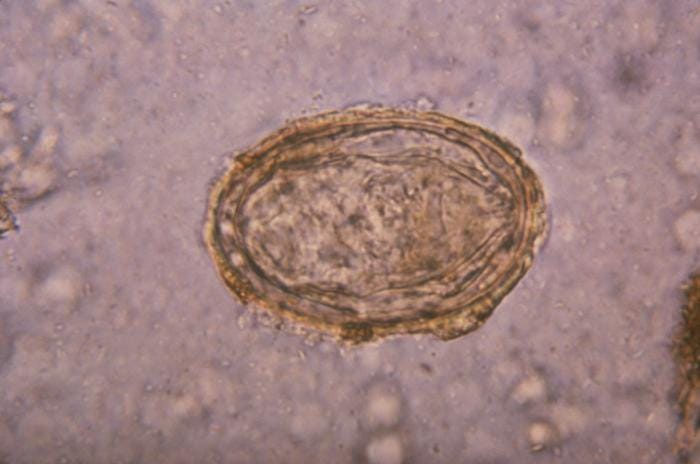The Tacloban City Health Office (CHO) is reporting cases (an outbreak of yet unknown numbers) of schistosomiasis in sixteen barangays, or villages in the city in the Leyte province.
The affected barangays include- Barangays 3 and 3-A Nulatula, Barangays 77, 78, 79, 80, 81, 82 of Marasbaras; Barangay 84 Manlurip San Jose, Barangay 95 and 95-A Caibaan, Barangay 96 Calanipawan, Barangay 100 San Roque, Barangay 103-A Paglaum, Barangay 107 Sta. Elena, and Barangay 108 Tagpuro, city officials announced.
Nurse Mel Maravilles with the CHO has sounded the alarm, urging residents to seek immediate medical attention if they experience symptoms such as stomach upset, headache, and vomiting. This call to action is not just a precaution but a necessary step in combating a disease that, while treatable, poses a significant risk to public health.
Maravilles emphasized the availability of free treatment for those affected.
In January, the Department of Health (DOH) regional office in the Eastern Visayas, which includes Leyte, assured the public of sufficient stocks of praziquantel tablets to combat schistosomiasis.
The disease, also known as snail fever, is endemic in 897 villages in 63 towns and cities in Leyte, Samar, Eastern Samar, and Northern Samar provinces.
According to a paper by researchers from the University of the Philippines and others in 2016, in the Philippines, the endemic species is Schistosoma japonicum to which 2.5 million Filipinos are directly exposed.
This video discusses all the pathogenic trematodes (flukes), including the schistosomes:
Schistosomiasis, also referred to as Bilharzia and Katayama fever, is an infection with a type of Schistosoma parasite.
The schistosomes or blood flukes are parasites that have been around since antiquity. It was described in writings in the Gynacological Papyrus of Kahun from 1900 BC. Calcified ova have been found in Egyptian mummies from 1250 BC. In other words, schistosomes can be associated with great civilizations of the past.
Schistosomiasis is second only to malaria in terms of socioeconomic and public health importance, with 200 million people infected in approximately 75 countries.
Blood flukes in Black and White
Schistosomiasis is an acute or chronic disease; it is not a single disease, but a disease complex initiated by several different species of schistosomes. The three most important human species are Schistosoma mansoni, S. haematobium and S. japonicum.
It is also considered a “man-made” disease, frequently associated with the development of irrigation and hydroelectric projects in developing countries.
Geographically, the three species are found in Africa (S.mansoni and S. haemotobium), the Middle East (S. haemotobium), the Arabian Peninsula, Brazil, Suriname, Venezuela and the Caribbean (S. mansoni) and China, the Philippines and parts of Indonesia (S. japonicum).

The schistosomes are found in fresh water. This water gets contaminated by infected people working in the rice field, fisherman in the lake or children playing who indiscriminately defecate or urinate in the water.
Schistosomes have a very complicated life cycle. The eggs in the feces or urine hatch and the ciliated miracidia swim to the specific snail species where it penetrates and goes through a couple of stages in the snail. After a period, thousands of the infective stage are released and swim around looking for a human to infect.
The free-swimming cercariae are capable of penetrating the unbroken skin of the human host.
In the human, the adult schistosomes eventually end up in the blood vessels of the intestines (S. mansoni and S. japonicum) or bladder (S. haemotobium). Here they produce eggs, which are the cause of the disease.
The pathology of S. mansoni and S. japonicum may include Katayama fever, hepatic perisinusoidal egg granulomas, Symmers’ pipe stem periportal fibrosis, portal hypertension, and occasional embolic egg granulomas in brain or spinal cord. People, especially children are characterized with a large distended abdomen due to enlarged liver and spleen.
Pathology of S. haematobium schistosomiasis includes hematuria (blood in the urine), scarring, calcification, squamous cell carcinoma, and occasional embolic egg granulomas in brain or spinal cord.
Schistosomiasis can be diagnosed by identifying the characteristic eggs in stool samples, biopsy of tissue, rectal (all) or bladder (S. haemotobium only). If eggs cannot be found in stool samples, antibody detection tests are available.
The drug of choice is praziquantel for infections caused by all Schistosoma species.
There is not a vaccine or any other prophylaxis available for prevention of schistosomiasis.





